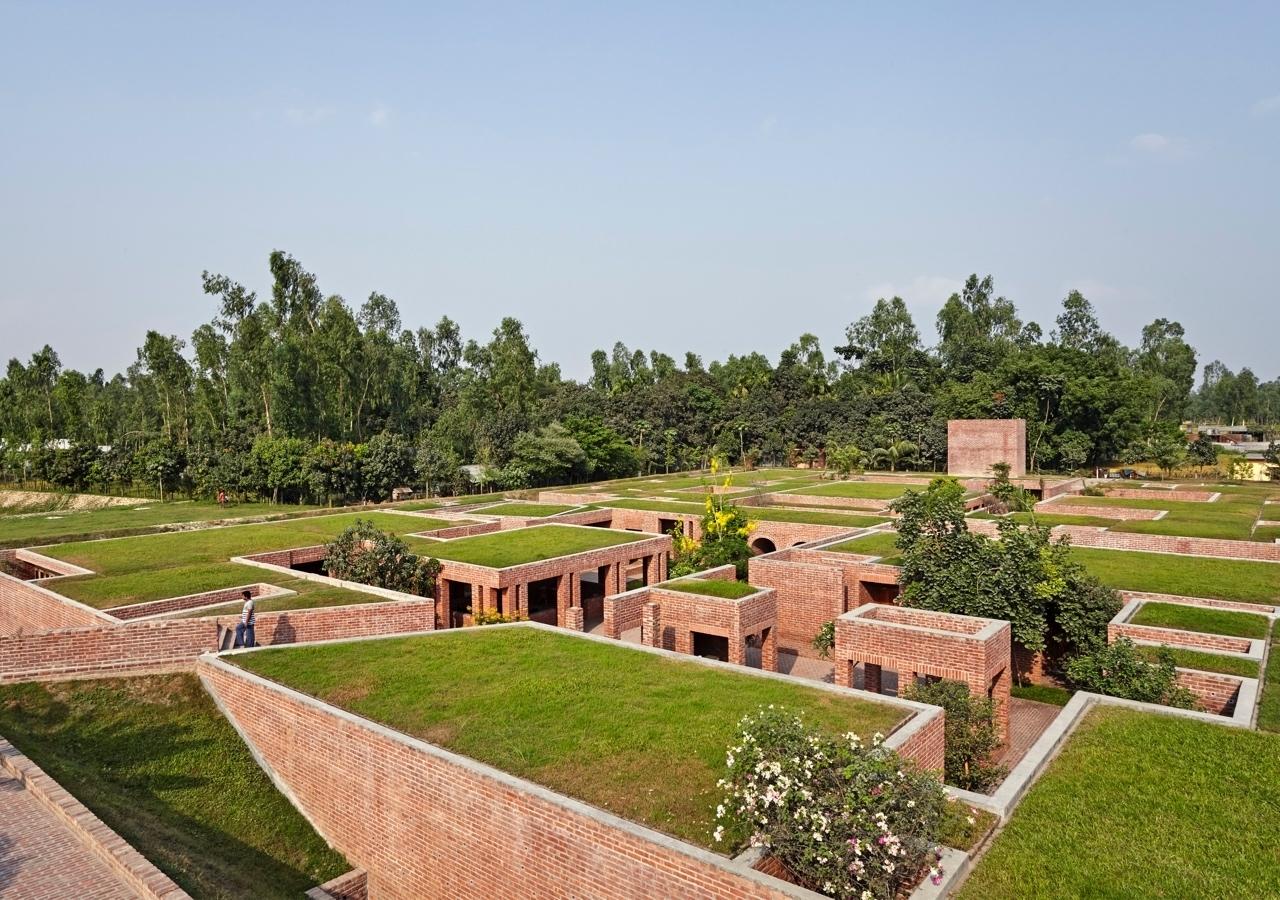The communities in the northern ‘Char’ areas of Bangladesh are living such a life.
“These are river islands, which are constantly eroding and forming anew,” said Naushad Ali Husein, senior executive of Friendship, an NGO working in the region. Members of the Ismaili community from Dhaka recently visited the Char areas and were given a first-hand glimpse into the lives of people living on these climate impacted islands.
The NGO brings a ray of sunshine in their lives through the many training programmes it offers at its Friendship Centre in Gaibandha, such as teaching, medicine, law and even theatre.
The Friendship Centre was built as a live-in training centre for these community social workers. Inspired by the Buddhist monastic architecture of the North Bengal flood plains, this centre was awarded the Aga Khan Award for Architecture in 2016.
“We were inspired by the sheer brilliance of this structure, and decided the Jamat must experience it, and see the innovative work that is going on here,” said Hamida Virani, Chairperson of the Communications and Publications Committee, who organised the visit. Members arrived at the Friendship Centre after an overnight 273 km drive and enjoyed a hearty breakfast before a tour of the space. “It was simply fascinating,” she said.
“The centre is built with local materials — brick, wood and cement,” said Naushad. The structure is simplistic yet remarkably built. Constructed downwards, one descends a flight of stairs into a plaza to enter the centre. Open courtyards and pools surround the buildings and the naturally ventilated structures are cooled by green roofs. Beyond the seminar halls and training spaces, one passes through arched corridors to reach the residential section of the centre.
The Friendship Centre was designed by architect Kashef Mahboob Chowdhury, who is one of two Bangladeshi architects to have been presented with the Aga Khan Award for Architecture in 2016. The awards are granted every three years to projects that set new standards of excellence in architecture across the world.
After touring the centre, there was little time for rest. The group hopped onto battery-powered tuktuks, and headed to a trawler, to get to the floating Emirates Friendship Hospital, one of two such examples of how the local community are adapting to a changing climate.
“You can’t have any permanent land structures here, since the land is constantly eroding,” said Naushad. “So you can imagine, a floating hospital is a very useful thing.”
“We saw the dental, gynaecological, surgical and other medical units on the hospital, as well its administrative areas,” said Hamida. “It’s hard to imagine that so many services can be made available onboard a boat this size.”
Before heading back to the centre, the group had lunch on the boat under a cool cover of clouds and even stopped at a sandy beach for some impromptu football and photos.
On the second day, the visitors took a boat to visit Batikamari Char and see some other projects being handled by the NGO, including a vocational training centre where women learn weaving, a paralegal booth, and a school.
“This trip gave us a moment to pause and thank God for our privilege, and to put the importance of health care, education, and shelter into perspective,” said Hamida. “It was informative, yet delightful and memorable.”












